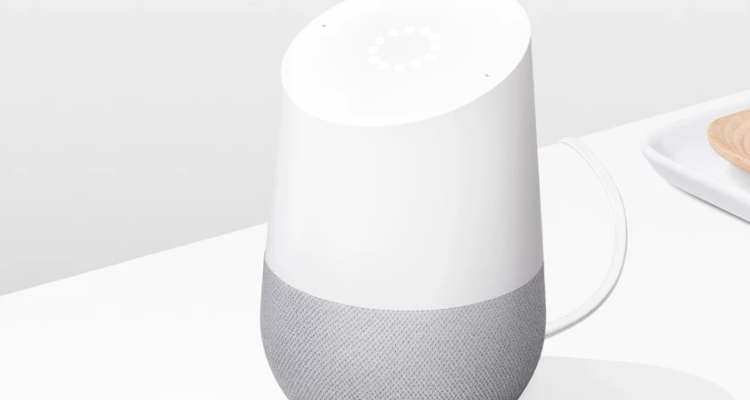Released in November of 2016, Google Home is the search giant’s first foray into the smart speaker industry. Like it’s competitor the Amazon Echo, this hands-free device may be used as a personal assistant, music player, or a control center for smart home products. The cylinder shaped accessory comes in a variety of colors and features an interchangeable base to match your home decor.
Located on the top is a touch display and LED lights that allows you to trigger services and adjust the volume. Inside is a 2-microphone array from InvenSense that can filter speech from background noise. A 2″ main driver speaker alongside dual 2″ passive radiators provides the sound. And powering the gadget is a Marvell 88DE3006 Dual Core ARM Cortex-A7 processor. The same one found in the 2nd generation Chromecast released at the end of 2015.
What do I use Google Home for?
Entertainment
Seeing as it’s labeled a “smart speaker”, it only makes sense that Google Home works as a handy music player for your home or office. It does this by syncing up to a number of popular music services such as Spotify, Pandora, YouTube, and Google Play Music. You can pull up a song whenever you feel like it with your own voice. Listen to local and internet radio stations via TuneIn and iHeartRadio by simply saying “Ok Google, play 79.9”. For podcasts and audiobooks, you’ll have to use a Chromecast enabled app to “cast” the content to the speaker.
Since Google Home also works as a control center for other Google supported devices (Chromecast Audio for instance), you can control speakers throughout your house. Play your child’s favorite lullaby from the room next door or get a party started in the basement with just a few voice commands.
Video is also supported . Voice commands allow you to pull up a funny YouTube video or the latest Netflix series. Currently Google Home supports CBS All Access, The CW, Netflix, and YouTube. Google Photos can also be synced to the device and with features such as face grouping, you can call up photos of someone with a simple command such as “Show me photos of Rebecca on the TV”. The photos app can also group photos by place, things, date, and custom albums (“Show me photos from Cancun Vacation” for instance).
Personal Assistant
If you’ve owned a newer Android phone, you may already be familiar with Google Assistant. It’s Google’s take on Apple’s Siri or Microsoft’s Cortana. A voice-controlled AI assistant that can provide conversational interactions. Ask about the weather or what movies are showing at the local theater. Get a stock quote or the score of a baseball game. It’ll even tell you where you left your phone.
While the basic voice commands are impressive, Google Assistant really shines in how personal it can get. Since it is linked to your Google account and has access to other services you may use such as Gmail or Maps, it can learn about you. This allows you to ask it whether the flight you booked is on time or how the traffic is on your daily work commute. It can read texts and make calls for you. Schedule meetings (which syncs with your Calendar app) or track your next run.
Smart Home Hub
Perhaps one of the most exciting features of Google Home is it’s ability to connect with your smart home devices. It’s partnered with a ton of companies such as Nest, Philips Hue, TP-Link, Wemo, Samsung SmartThings, Frigidaire, Hive, iRobot, LG, Iris by Lowe’s, Ring, Wink, and tons more. This allows you to change the temperature in the home, turn off the outside lights, or start the robotic vacuum with simple voice commands.
How do I get it and how much?
Google Home currently retails for $109. It can be purchased directly through Google’s store or at retailers such as Best Buy or NewEgg.com.

